|
|
|
We study the
molecular biology and pathogenesis of infectious diseases, chiefly
HIV-1 and
prions.
A major tool in our
investigations is
aptamer technology.
Recent publications
are listed
here.
Post-doctoral
opportunity, May 2006. Details here.
|
|
William James
University
Lecturer
Tutorial
Fellow of
Brasenose
College
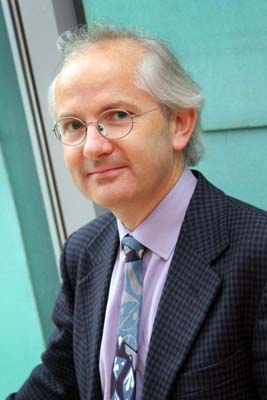
|
Carla Griffiths
aptamer interactions with HIV-1 gp120
Graduate
Student,
Wolfson
College
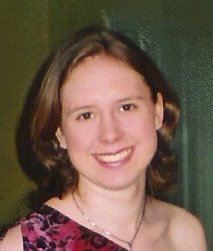
|
Ally Evans
Personal
assistant

|
|
Karl Karlsson
Human ES
cell-derived Macrophages, HIV
Graduate
Student,
Lincoln
College

|
Veronica Coventry
Aptamer
Microbicide Program
Post-doctoral
Associate
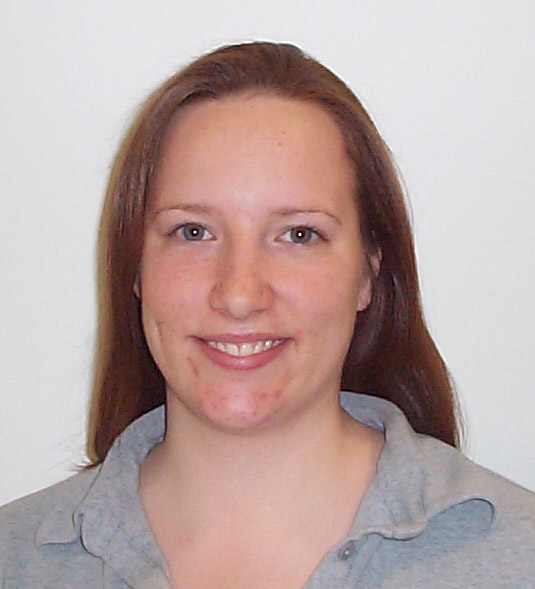 |
Sabine Fengler
HIV and neutralizing aptamers
Post-doctoral
associate
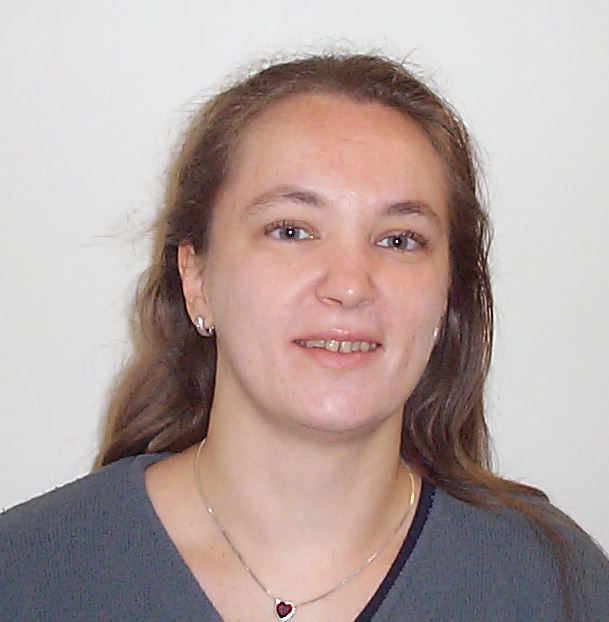
|
|
Mario Forzan
Aptamer Microbicide Program
Post-doctoral Associate
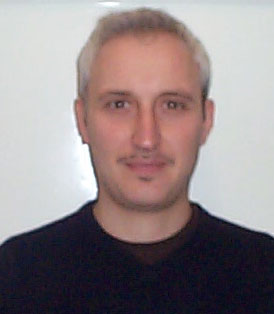 |
Remo Gerber
NMR analysis of
PrP folding
Graduate
Student,
Lincoln
College
with Prof.
Peter J. Hore, Physical & Theoretical Chemistry

|
Mike Puklavec
Tissue Culture specialist
with Professor A N Barclay

|
|
Emily Spence
Human ES cells
Undergraduate
Student,
Merton
College
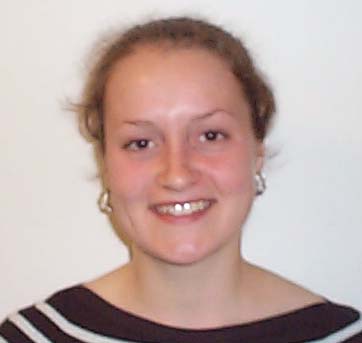
|
Chris Lyons
PrP folding in vitro
Undergraduate student, Temple University
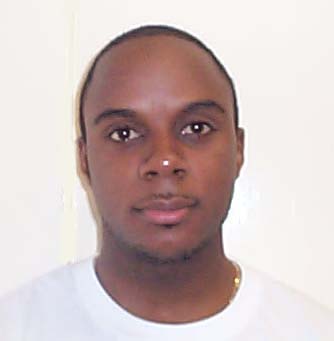
|
Clement Mitchell
PrP Folding in
vitro
Undergraduate
student,
St John's
College
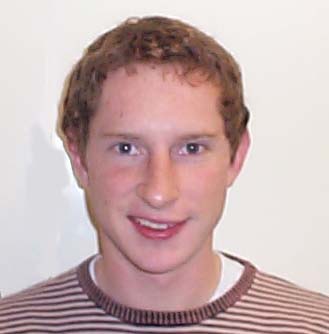
|
|
|
|
|
|
AIDS, which is caused by infection with the retrovirus, HIV, currently
kills approximately 3 million people and infects an additional 5 million
world-wide every year (see UN
AIDS for updates). We have been interested in investigating the
molecular cell biology of this virus for two decades, principally focussing
on the mechanisms of virus entry into cells and RNA-based methods for
inhibiting HIV replication.
We have recently isolated aptamers (see below) that bind to the envelope
glycoprotein of HIV (refs 1-4, to the right). The ligands turn out to
inhibit the infection of lymphocytes by clinical strains of virus from
around the world to an extent that makes them very interesting both for
clinical applications (such as prevention and treatment) and as reagents for
analysing virus-cell interactions.
TOP
|
1. Dey, A.K., M. Khati, M. Tang, R. Wyatt, S.M. Lea, and W. James,
An aptamer that neutralizes R5 strains of HIV-1 blocks gp120-CCR5
interaction. submitted.
2.  Dey,
A.K., C. Griffiths, S.M. Lea, and W. James, Structural characterization
of an anti-gp120 RNA aptamer that neutralizes R5 strains of HIV-1. Rna,
2005. 11(6): p. 873-84. Dey,
A.K., C. Griffiths, S.M. Lea, and W. James, Structural characterization
of an anti-gp120 RNA aptamer that neutralizes R5 strains of HIV-1. Rna,
2005. 11(6): p. 873-84.
3.  Khati, M., M. Schuman, J. Ibrahim, Q. Sattentau, S. Gordon, and W. James,
Neutralization of infectivity of diverse R5 clinical isolates of human
immunodeficiency virus type 1 by gp120-binding 2'F-RNA aptamers. J Virol,
2003. 77(23): p. 12692-8.
Khati, M., M. Schuman, J. Ibrahim, Q. Sattentau, S. Gordon, and W. James,
Neutralization of infectivity of diverse R5 clinical isolates of human
immunodeficiency virus type 1 by gp120-binding 2'F-RNA aptamers. J Virol,
2003. 77(23): p. 12692-8.
4.  Sayer,
N., J. Ibrahim, K. Turner, A. Tahiri-Alaoui, and W. James, Structural
characterization of a 2(')F-RNA aptamer that binds a HIV-1 SU glycoprotein,
gp120. Biochem Biophys Res Commun, 2002. 293(3): p. 924-31. Sayer,
N., J. Ibrahim, K. Turner, A. Tahiri-Alaoui, and W. James, Structural
characterization of a 2(')F-RNA aptamer that binds a HIV-1 SU glycoprotein,
gp120. Biochem Biophys Res Commun, 2002. 293(3): p. 924-31.
5. Khati, M., W. James, and S. Gordon, HIV-macrophage
interactions at the cellular and molecular level. Arch Immunol Ther Exp
(Warsz), 2001. 49(5): p. 367-78.
6. Ibrahim, J., P. Griffin, D.R. Coombe, C.C. Rider, and W. James,
Cell-surface heparan sulfate facilitates human immunodeficiency virus
Type 1 entry into some cell lines but not primary lymphocytes. Virus Res,
1999. 60(2): p. 159-69.
7. Simon, J.H.M., P. Stumbles, N. Signoret, C. Somoza, M. Puklavec,
Q. Sattentau, A.N. Barclay, and W. James, Role of CD4 epitopes outside
the gp120-binding site during entry of HIV-1. J Virol, 1997. 71(2):
p. 1476-1484.
8. Sczakiel, G., G. Palu, and W. James, Delivery of Recombinant
HIV-1-directed antisense and ribozyme genes, in Recombinant proteins:
detection and isolation protocols, R. Tuan, Editor. 1996, Humana Press,
Inc: Totowa, NJ, USA. p. 389-400.
9. Herbein, G., P. Illei, L. Montaner, W. James, and S. Gordon,
Comparison of p24 measurement by ELISA versus indicator cells for detecting
residual HIV infectivity in vitro. J Virol Methods, 1996. 58: p.
167-173.
10. de Vreese, K., D. Reymen, P. Griffin, G. Werner, J. Este, W.
James, R. Datema, G. Henson, J. Desmyter, J. Anne, and E. de Clercq,
Mechanism of action studies on the bicyclams, a new class of potent HIV
inhibitors. Antiviral research, 1996. 29: p. 209-219.
11. James, W., R. Weiss, and J. Simon, The Receptor for HIV:
dissection of CD4 and studies on putative accessory factors, in The
CD4 molecule, D. Littman, Editor. 1995, Springer-Verlag: Berlin. p.
137-158.
12. Meier, U.-C., P. Klenerman, P. Griffin, W. James, B. Koppe, B.
Larder, A. McMichael, and R. Phillips, Cytotoxic T Lymphocyte lysis
inhibited by viable HIV mutants. Science, 1995. 270: p.
1360-1362.
13. Fischer, P., M. Collin, G. Karlsson, W. James, T. Butters, S.
Davis, S. Gordon, R. Dwek, and F. Platt, The alpha-glucosidase inhibitor
N-butyldeoxynojirimycin inhibits HIV entry at the post-CD4 binding level.
J Virol, 1995. 68(9): p. 5791-5797.
14. Ashe, M.P., P. Griffin, W. James, and N.J. Proudfoot, Poly(A)
site selection in the HIV-1 Provirus: inhibition of promoter-proximal
polyadenylation by the downstream major splice donor site. Genes &
Development, 1995. 9(12): p. 3008-3025.
15. Simon, J.H.M. and W. James, Heterokaryons formed between a rat
myeloma and a mouse fibroblast are permissive for entry of HIV-1. AIDS
Res Hum Retroviruses, 1994. 10(12): p. 1609-1611.
16. Simon, J., G. Schockmel, P. Illei, and W. James, A rodent cell
line permissive for entry and reverse transcription of HIV-1 has a
pre-integration block to productive infection. J Gen Virol, 1994. 75:
p. 2615-2623.
17. Collin, M., P. Illei, W. James, and S. Gordon, Definition of
the range and distribution of HIV macrophage tropism using PCR-based
infectivity measurements. J Gen Virol, 1994. 75: p. 1597-1603.
18. Simon, J.H., C. Somoza, G.A. Schockmel, M. Collin, S.J. Davis, A.F.
Williams, and W. James, A rat CD4 mutant containing the gp120-binding
site mediates human immunodeficiency virus type 1 infection. J Exp Med,
1993. 177(4): p. 949-54.
19. Montaner, L., A. Doyle, M. Collin, G. Herbein, P. Illei, W. James,
A. Minty, D. Caput, P. Ferrara, and S. Gordon, Interleukin 13 inhibits
HIV-1 production in primary blood-derived human macrophages in vitro. J
Exp Med, 1993. 178: p. 743-747.
20. Gregory, S., R. Collman, W. James, S. Gordon, F. Gonzalez-Scarano,
and N. Nathanson, HIV-1 pseudotype virus containing a Cocal virus genome:
construction, assay and use. J Virol Met, 1993. 44: p. 287-304.
21. Davis, S., W. James, G. Schockmel, J. Simon, and C. Somoza, The
recognition of chimeras of rat and human CD4 by HIV-1 gp120 and monoclonal
antibodies. Phil Trans R Soc Lond B, 1993. 342: p. 75-81.
22. Crisell, P., S. Thompson, and W. James, Inhibition of HIV-1
replication by ribozymes that show poor activity in vitro. Nuc Acids Res,
1993. 21: p. 5251-5.
23. James, W., P. Crisell, and A. Rhodes, Gene Inhibition of HIV-1
replication. A comparative and mechanistic study. Ann NY Acad Sci, 1992.
660: p. 274-6.
24. Rhodes, A. and W. James, Inhibition of heterologous strains of
HIV by antisense RNA [see comments]. Aids, 1991. 5(2): p. 145-51.
25. Collin, M., W. James, and S. Gordon, Development of techniques
to analyse the formation of HIV provirus in primary human macrophages.
Res Virol, 1991. 142(2-3): p. 105-12.
26. Rhodes, A. and W. James, Inhibition of human immunodeficiency
virus replication in cell culture by endogenously synthesized antisense RNA.
J Gen Virol, 1990. 71(owned): p. 1965-74.
|
|
Aptamers are artificial
nucleic acid ligands that are isolated from complex libraries of synthetic oligos.
They can be used, like antibodies, to investigate biological systems but
are small, protease resistant and do not suffer from the limitations of
tolerance, antigen processing and so on. For a reviews, follow the links
opposite.
TOP
|
1.  James, W., Aptamers, in The Encyclopedia of Analytical Chemistry:
Instrumentation and Applications, R. Myers, Editor. 2000, John Wiley. p.
22pp.
James, W., Aptamers, in The Encyclopedia of Analytical Chemistry:
Instrumentation and Applications, R. Myers, Editor. 2000, John Wiley. p.
22pp.
2.  James, W., Nucleic acid and polypeptide aptamers: a powerful approach to
ligand discovery. Current Opinion in Pharmacology, 2001. 1: p.
540-546.
James, W., Nucleic acid and polypeptide aptamers: a powerful approach to
ligand discovery. Current Opinion in Pharmacology, 2001. 1: p.
540-546.
3.  Sayer, N., J. Ibrahim, K. Turner, A. Tahiri-Alaoui, and W. James,
Structural characterization of a 2(')F-RNA aptamer that binds a HIV-1 SU
glycoprotein, gp120. Biochem Biophys Res Commun, 2002. 293(3): p.
924-31.
Sayer, N., J. Ibrahim, K. Turner, A. Tahiri-Alaoui, and W. James,
Structural characterization of a 2(')F-RNA aptamer that binds a HIV-1 SU
glycoprotein, gp120. Biochem Biophys Res Commun, 2002. 293(3): p.
924-31.
4.  Rhie, A., L. Kirby, N. Sayer, R. Wellesley, P. Disterer, I. Sylvester, A.
Gill, J. Hope, W. James, and A. Tahiri-Alaoui, Characterization of
2'-Fluoro-RNA Aptamers That Bind Preferentially to Disease-associated
Conformations of Prion Protein and Inhibit Conversion. J Biol Chem,
2003. 278(41): p. 39697-705.
Rhie, A., L. Kirby, N. Sayer, R. Wellesley, P. Disterer, I. Sylvester, A.
Gill, J. Hope, W. James, and A. Tahiri-Alaoui, Characterization of
2'-Fluoro-RNA Aptamers That Bind Preferentially to Disease-associated
Conformations of Prion Protein and Inhibit Conversion. J Biol Chem,
2003. 278(41): p. 39697-705.
5.  Khati, M., M. Schuman, J. Ibrahim, Q. Sattentau, S. Gordon, and W. James,
Neutralization of infectivity of diverse R5 clinical isolates of human
immunodeficiency virus type 1 by gp120-binding 2'F-RNA aptamers. J Virol,
2003. 77(23): p. 12692-8.
Khati, M., M. Schuman, J. Ibrahim, Q. Sattentau, S. Gordon, and W. James,
Neutralization of infectivity of diverse R5 clinical isolates of human
immunodeficiency virus type 1 by gp120-binding 2'F-RNA aptamers. J Virol,
2003. 77(23): p. 12692-8.
6.  Tahiri-Alaoui, A., L. Frigotto, N. Manville, J. Ibrahim, P. Romby, and W.
James, High affinity nucleic acid aptamers for streptavidin incorporated
into bi-specific capture ligands. Nucleic Acids Res, 2002. 30(10):
p. e45.
Tahiri-Alaoui, A., L. Frigotto, N. Manville, J. Ibrahim, P. Romby, and W.
James, High affinity nucleic acid aptamers for streptavidin incorporated
into bi-specific capture ligands. Nucleic Acids Res, 2002. 30(10):
p. e45.
7.  Sayer, N.M., M. Cubin, A. Rhie, M. Bullock, A. Tahiri-Alaoui, and W. James,
Structural determinants of conformationally selective, prion-binding
aptamers. J Biol Chem, 2004. 279(13): p. 13102-9.
Sayer, N.M., M. Cubin, A. Rhie, M. Bullock, A. Tahiri-Alaoui, and W. James,
Structural determinants of conformationally selective, prion-binding
aptamers. J Biol Chem, 2004. 279(13): p. 13102-9.
8.  Dey, A.K., C. Griffiths, S.M. Lea, and W. James, Structural
characterization of an anti-gp120 RNA aptamer that neutralizes R5 strains of
HIV-1. Rna, 2005. 11(6): p. 873-84.
Dey, A.K., C. Griffiths, S.M. Lea, and W. James, Structural
characterization of an anti-gp120 RNA aptamer that neutralizes R5 strains of
HIV-1. Rna, 2005. 11(6): p. 873-84. |
|
Transmissible spongiform
encephalopathies (TSEs), including scrapie, BSE and variant CJD, are
associated with the the deposition of an abnormally folded version of the
cellular PrP protein in amyloid plaques in the brain. This mis-folded
protein may itelf be the infectious agent - a prion - but we structural
basis for the process is obscure. We are using the aptamer approach to
investigate the problem
TOP |
1.  Tahiri-Alaoui, A. and W. James, Rapid formation of amyloid from
{alpha}-monomeric recombinant human PrP in vitro. Protein Sci, 2005.
14(4): p. 942-7.
Tahiri-Alaoui, A. and W. James, Rapid formation of amyloid from
{alpha}-monomeric recombinant human PrP in vitro. Protein Sci, 2005.
14(4): p. 942-7.
2.  Baskakov, I., P. Disterer, L. Breydo, M. Shaw, A. Gill, W. James, and A.
Tahiri-Alaoui, The presence of valine at residue 129 in human prion
protein accelerates amyloid formation. FEBS Lett, 2005. in press.
Baskakov, I., P. Disterer, L. Breydo, M. Shaw, A. Gill, W. James, and A.
Tahiri-Alaoui, The presence of valine at residue 129 in human prion
protein accelerates amyloid formation. FEBS Lett, 2005. in press.
3.  Sayer, N.M., M. Cubin, A. Rhie, M. Bullock, A. Tahiri-Alaoui, and W. James,
Structural determinants of conformationally selective, prion-binding
aptamers. J Biol Chem, 2004. 279(13): p. 13102-9.
Sayer, N.M., M. Cubin, A. Rhie, M. Bullock, A. Tahiri-Alaoui, and W. James,
Structural determinants of conformationally selective, prion-binding
aptamers. J Biol Chem, 2004. 279(13): p. 13102-9.
4.  Tahiri-Alaoui, A., A.C. Gill, P. Disterer, and W. James, Methionine 129
Variant of Human Prion Protein Oligomerizes More Rapidly than the Valine 129
Variant: IMPLICATIONS FOR DISEASE SUSCEPTIBILITY TO CREUTZFELDT-JAKOB
DISEASE. J. Biol. Chem., 2004. 279(30): p. 31390-31397.
Tahiri-Alaoui, A., A.C. Gill, P. Disterer, and W. James, Methionine 129
Variant of Human Prion Protein Oligomerizes More Rapidly than the Valine 129
Variant: IMPLICATIONS FOR DISEASE SUSCEPTIBILITY TO CREUTZFELDT-JAKOB
DISEASE. J. Biol. Chem., 2004. 279(30): p. 31390-31397.
5.  Tahiri-Alaoui, A., M. Bouchard, J. Zurdo, and W. James, Competing
intrachain interactions regulate the formation of beta-sheet fibrils in
bovine PrP peptides. Protein Sci, 2003. 12(3): p. 600-8.
Tahiri-Alaoui, A., M. Bouchard, J. Zurdo, and W. James, Competing
intrachain interactions regulate the formation of beta-sheet fibrils in
bovine PrP peptides. Protein Sci, 2003. 12(3): p. 600-8.
6.  Rhie, A., L. Kirby, N. Sayer, R. Wellesley, P. Disterer, I. Sylvester, A.
Gill, J. Hope, W. James, and A. Tahiri-Alaoui, Characterization of
2'-Fluoro-RNA Aptamers That Bind Preferentially to Disease-associated
Conformations of Prion Protein and Inhibit Conversion. J Biol Chem,
2003. 278(41): p. 39697-705.
Rhie, A., L. Kirby, N. Sayer, R. Wellesley, P. Disterer, I. Sylvester, A.
Gill, J. Hope, W. James, and A. Tahiri-Alaoui, Characterization of
2'-Fluoro-RNA Aptamers That Bind Preferentially to Disease-associated
Conformations of Prion Protein and Inhibit Conversion. J Biol Chem,
2003. 278(41): p. 39697-705. |
|
Arthropod-borne viruses are an
important source of morbidity and mortality, especially in the developing
world. We have had a long-standing interest in investigating the molecualr
biology of Flaviviruses, such as Dengue virus, and Bunyaviruses.
TOP |
1. James, W.S. and D. Millican, Host-adaptive antigenic variation
in Bunyaviruses. J Gen Virol, 1986. 67(owned): p. 2803-6.
2.  Solomon, T., N.M. Dung, D.W. Vaughn, R. Kneen, L.T. Thao, B. Raengsakulrach,
H.T. Loan, N.P. Day, J. Farrar, K.S. Myint, M.J. Warrell, W.S. James, A.
Nisalak, and N.J. White, Neurological manifestations of dengue infection.
Lancet, 2000. 355(9209): p. 1053-9.
Solomon, T., N.M. Dung, D.W. Vaughn, R. Kneen, L.T. Thao, B. Raengsakulrach,
H.T. Loan, N.P. Day, J. Farrar, K.S. Myint, M.J. Warrell, W.S. James, A.
Nisalak, and N.J. White, Neurological manifestations of dengue infection.
Lancet, 2000. 355(9209): p. 1053-9.
3.  Uzcategui, N.Y., G. Comach, D. Camacho, M. Salcedo, M. Cabello De Quintana,
M. Jimenez, G. Sierra, R. Cuello De Uzcategui, W.S. James, S. Turner, E.C.
Holmes, and E.A. Gould, Molecular epidemiology of dengue virus type 3 in
Venezuela. J Gen Virol, 2003. 84(Pt 6): p. 1569-1575.
Uzcategui, N.Y., G. Comach, D. Camacho, M. Salcedo, M. Cabello De Quintana,
M. Jimenez, G. Sierra, R. Cuello De Uzcategui, W.S. James, S. Turner, E.C.
Holmes, and E.A. Gould, Molecular epidemiology of dengue virus type 3 in
Venezuela. J Gen Virol, 2003. 84(Pt 6): p. 1569-1575. |
|
We are interested in the
immunological aspects of virus-cell interaction, particularly
macrophage-tropic strains of HIV and investigate the properties of selected
cell-surface glycoproteins of immunological interest using the aptamer
approach. Our collaborators in this area are Neil Barclay
and Siamon Gordon
TOP |
 Al-Shamkhani, A., M. Birkeland, M. Puklavec, M. Brown, W.
James, and A. Barclay. 1996. OX40 is differentially expressed on activated
rat and mouse T cells and is the sole receptor for the OX40 ligand. Eur J
Immunol. 26:1695-1699.
Al-Shamkhani, A., M. Birkeland, M. Puklavec, M. Brown, W.
James, and A. Barclay. 1996. OX40 is differentially expressed on activated
rat and mouse T cells and is the sole receptor for the OX40 ligand. Eur J
Immunol. 26:1695-1699.
 Al-Shamkhani, A, Mallett, S, Brown, MH, James, W and
Barclay, AN 1997. Affinity and kinetics of the interaction between soluble
trimeric OX40 ligand, a member of the TNF superfamily, and its receptor,
OX40, on activated T cells. J Biol Chem 272:5275-82.
Al-Shamkhani, A, Mallett, S, Brown, MH, James, W and
Barclay, AN 1997. Affinity and kinetics of the interaction between soluble
trimeric OX40 ligand, a member of the TNF superfamily, and its receptor,
OX40, on activated T cells. J Biol Chem 272:5275-82.
 Meier, U.-C., P. Klenerman, P. Griffin, W. James, B.
Koppe, B. Larder, A. McMichael, and R. Phillips. 1995. Cytotoxic T
Lymphocyte lysis inhibited by viable HIV mutants. Science. 270:1360-1362.
Meier, U.-C., P. Klenerman, P. Griffin, W. James, B.
Koppe, B. Larder, A. McMichael, and R. Phillips. 1995. Cytotoxic T
Lymphocyte lysis inhibited by viable HIV mutants. Science. 270:1360-1362.
 Montaner, L., A. Doyle, M. Collin, G. Herbein, P. Illei,
W. James, A. Minty, D. Caput, P. Ferrara, and S. Gordon. 1993. Interleukin
13 inhibits HIV-1 production in primary blood-derived human macrophages in
vitro. J Exp Med. 178:743-747.
Montaner, L., A. Doyle, M. Collin, G. Herbein, P. Illei,
W. James, A. Minty, D. Caput, P. Ferrara, and S. Gordon. 1993. Interleukin
13 inhibits HIV-1 production in primary blood-derived human macrophages in
vitro. J Exp Med. 178:743-747.
|
|
Understanding
the determinants of their activity in mammalian cells (illustrated
discussion here)
Developing
a gene therapy against AIDS
Using them to ablate cellular
gene expression (Review of the field here )
Computer modelling of RNA-RNA
interactions discussed here
We no longer research in this
area.
TOP
|
 Crisell,
P., S. Thompson, and W. James. 1993. Inhibition of HIV-1 replication by
ribozymes that show poor activity in vitro. Nuc Acids Res. 21:5251-5.
Crisell,
P., S. Thompson, and W. James. 1993. Inhibition of HIV-1 replication by
ribozymes that show poor activity in vitro. Nuc Acids Res. 21:5251-5.
 James, W. 1991. Towards gene-inhibition
therapy: a review of progress and prospects in the field of antiviral
antisense nucleic acids and ribozymes. Antivir Chem Chemother.
2(4):191-214.
James, W. 1991. Towards gene-inhibition
therapy: a review of progress and prospects in the field of antiviral
antisense nucleic acids and ribozymes. Antivir Chem Chemother.
2(4):191-214.
 James, W., and A. Al-Shamkhani. 1995.
RNA enzymes as tools for gene ablation. Current Optinion in Biotechnology.
6(1):44-49.
James, W., and A. Al-Shamkhani. 1995.
RNA enzymes as tools for gene ablation. Current Optinion in Biotechnology.
6(1):44-49.
 James, W., and E. Cowe. 1996.
Computational approaches to the Identification of ribozyme target sites. In
P. Turner (ed.), Methods in Molecular Biology, vol. (in press). Humana
Press
James, W., and E. Cowe. 1996.
Computational approaches to the Identification of ribozyme target sites. In
P. Turner (ed.), Methods in Molecular Biology, vol. (in press). Humana
Press
 Rhodes, A., and W. James. 1991.
Inhibition of heterologous strains of HIV by antisense RNA. Aids.
5(2):145-51.
Rhodes, A., and W. James. 1991.
Inhibition of heterologous strains of HIV by antisense RNA. Aids.
5(2):145-51.
 Rhodes, A., and W. James. 1990.
Inhibition of human immunodeficiency virus replication in cell culture by
endogenously synthesized antisense RNA. J Gen Virol. 71:1965-74.
Rhodes, A., and W. James. 1990.
Inhibition of human immunodeficiency virus replication in cell culture by
endogenously synthesized antisense RNA. J Gen Virol. 71:1965-74.
 Sczakiel,
G., G. Palu, and W. James. 1996. Delivery of Recombinant HIV-1-directed
antisense and ribozyme genes, p. 12pp. In R. Tuan (ed.), Recombinant
proteins: detection and isolation protocols, vol. 63. Humana Press, Inc, Totowa, NJ,
USA.
Sczakiel,
G., G. Palu, and W. James. 1996. Delivery of Recombinant HIV-1-directed
antisense and ribozyme genes, p. 12pp. In R. Tuan (ed.), Recombinant
proteins: detection and isolation protocols, vol. 63. Humana Press, Inc, Totowa, NJ,
USA.
|
|